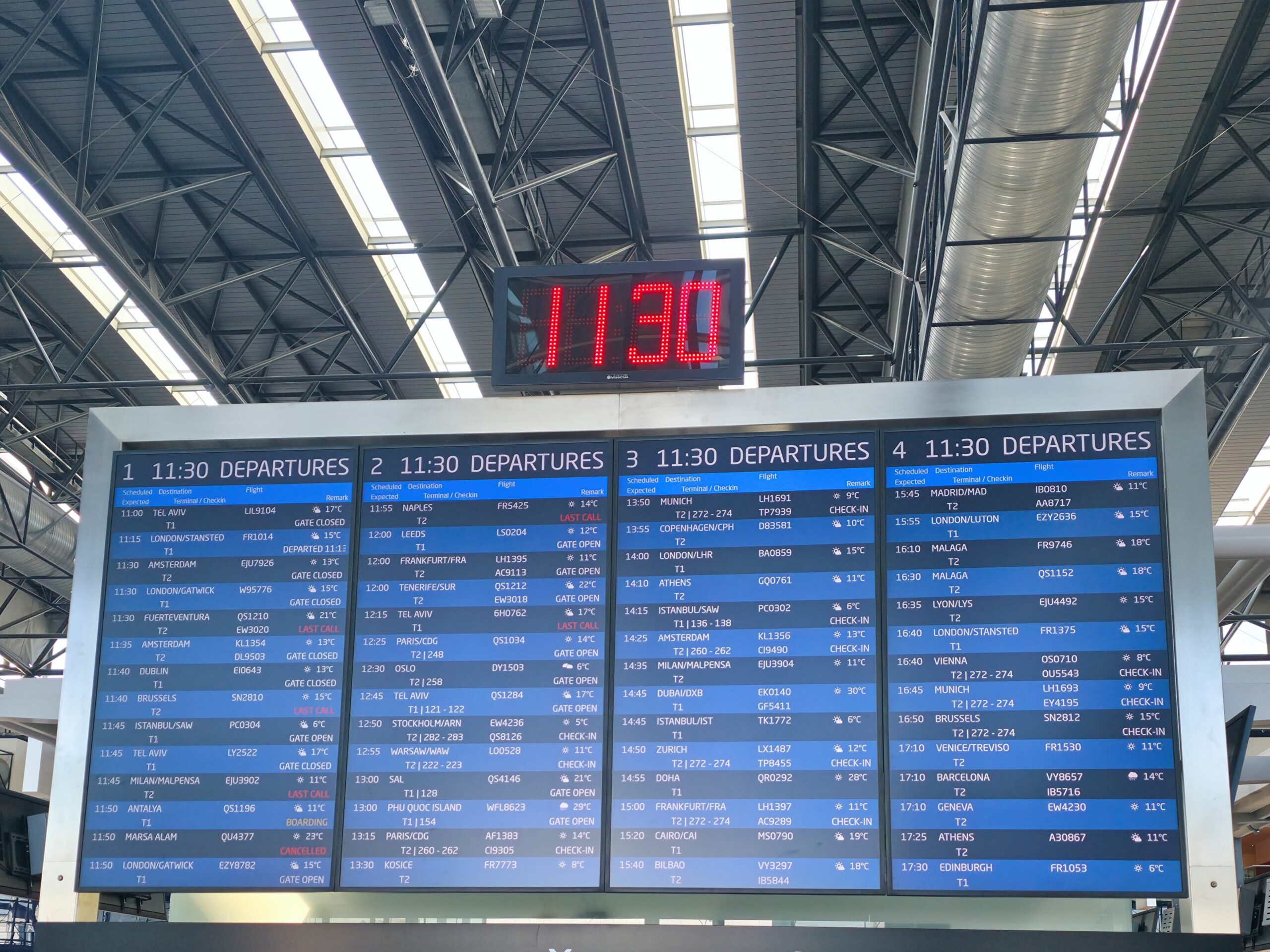
Prague’s Václav Havel Airport has temporarily shifted all flights to its secondary runway while the main runway undergoes a major modernization project (scheduled to finish in mid‑August 2025). Unfortunately, the secondary strip isn’t equipped for low‑visibility approaches—and when fog, heavy rain or snow rolls in, flights can be delayed or even cancelled. Below is a clear guide to what you can expect, what you’re entitled to under EU regulations, and practical tips to reduce your risk of disruption.
Why Flights Are Being Diverted
-
Main Runway Upgrade
Since the end of March 2025, all take‑offs and landings have been using the secondary runway to allow resurfacing, lighting upgrades and installation of a new Instrument Landing System (ILS) on the primary runway. -
Low‑Visibility Limitations
The temporary runway lacks advanced navigational aids needed for operations in fog or heavy precipitation. When visibility drops below safe minima, controllers must hold inbound aircraft in a holding pattern or divert them, and ground departures are suspended. -
Real‑World Impact
On Wednesday, dense morning fog in western Prague delayed or cancelled dozens of flights: by 10 a.m., 24 arrivals were affected, six flights were scrapped and all morning departures ran late.
Your Rights Under EU Regulation 261/2004
Even when “extraordinary circumstances” like severe weather are to blame (which legally waive compensation), airlines must still provide care and assistance:
-
Short Delays
-
2+ hours on flights ≤ 1 500 km
-
3+ hours on intra‑EU flights ≤ 1 500 km and other flights 1 500–3 500 km
-
4+ hours on flights > 3 500 km
➔ Complimentary snacks, hot/cold drinks and two free calls, emails or messages.
-
-
Long Delays (5+ hours)
-
Right to refund your ticket (and a return leg, if relevant) within seven days.
-
Or choose an alternative transport to your final destination at the earliest opportunity.
-
If re‑scheduled for the next day, you’re also entitled to hotel accommodation and transfers.
-
-
Cancellations
-
You can pick a full refund (plus return to origin) or an alternative flight.
-
The same meal, communication and accommodation rights apply as for delays.
-
To submit a claim, contact your airline directly. If you don’t receive a satisfactory reply within two months, escalate via the Czech Civil Aviation Authority using their online form.
Practical Tips to Minimize Disruption
-
Monitor Weather Forecasts
Fog is most likely in the early morning and late evening when temperatures drop. Check local forecasts (e.g., chmi.cz) before you travel. -
Choose Flight Times Carefully
Mid‑day departures tend to face fewer visibility restrictions—but this isn’t a guarantee. -
Sign Up for Alerts
Register for SMS or app notifications with your airline to get real‑time updates on delays or gate changes. -
Arrive Early
With ongoing roadworks in front of Terminal 1 until 30 June 2025, allow extra time for ground transport changes and parking diversions. -
Have a Plan B
If your flight looks at risk, research early‑morning or late‑afternoon alternatives, or consider the rail link into Central Prague as backup.
Airport Reconstruction & Local Traffic Changes
-
Roadworks Phases
From now until 30 June 2025, Aviatická Street in front of Terminal 1 and the PB parking zone will undergo four phases of repair. Temporary traffic layouts and restrictions are in place—check the airport website or mobile app for maps and detours. -
Public Transport Options
Shuttle buses and the Airport Express train to Prague’s main station remain reliable alternatives if car or taxi access is delayed.
Looking Ahead: Smoother Operations by Summer’s End
By mid‑August, once the primary runway modernization is complete (including CAT III ILS capability), Václav Havel Airport will be fully equipped to handle low‑visibility conditions again. This upgrade promises:
-
Fewer Weather‑Related Disruptions
Advanced glide‑path guidance for landings in dense fog or snow. -
Improved Safety & Capacity
New pavement and lighting will support heavier traffic and reduce maintenance closures. -
Noise‑Reduction Measures
The resurfaced runway will incorporate new acoustic barriers to lessen impact on nearby communities.
Airport Traffic at a Glance
-
2024 Throughput: 16.35 million passengers (↑ 18 % vs. 2023)
-
February 2025: Over 1 million travellers, leading destinations—London, Paris, Milan, Dubai, Amsterdam.
-
2025 Forecast: Aiming for a record 18.4 million passengers.
With careful planning and by knowing your rights, you can navigate this construction period more smoothly. Safe travels!
